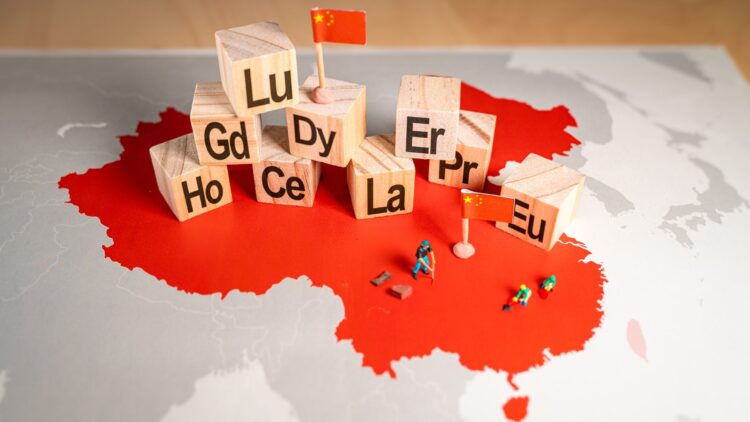The extraction of rare Earth materials has been an ongoing battle ever since technology became more widespread. Countries have been trying to find these materials in more accessible places in order to extract them as cheaply as possible, and while this is not always possible, a new discovery in China has changed the game for the foreseeable future. They have unearthed a deposit that could put them at the forefront of extractions and this is after their already known 17 types of rare earth ores and 44 million tons in reserves.
This unprecedented find happened in Hinghe, a region in Yunnan province. The 470,000 tons of extremely valuable rare earth minerals seem to contain praseodymium, neodymium, dysprosium, and terbium which are extremely rare and sought after in today’s technologically focused world. These minerals are used in things like smartphones, electric vehicles, energy production systems and more, and so their abundance could solve a lot of the issues and at the same time enrich China beyond their current projections.
The impact of this rare Earth mineral find for China
But even though these materials are very valuable and they are quite sought after, what is making this discovery especially exciting for the mining community is that this deposit is an ion-adsorption type, which means that the minerals are found on the surface of clay beds and weathered granite, making extraction a bit more straightforward (and less damaging to the environment, relatively speaking). This is a similar setup as what was found in 1986 in Jiangxi province, so while it is not rare, it has been a long time since a deposit of this type was found.
Dr. Li Wei of the China Geological Survey gushed about the discovery and explained what it means for the country “This changes everything. With over 470,000 tons of rare earths, China is now even better positioned to control the global supply and meet skyrocketing demand.”
And the demand really is high today, at current market rates some rare earth materials are fetching as much as $500 per kilogram in the open market, making the value of the mine about $216 million. This could be even higher soon as the demand is only going up, but although the monetary value can be quite the allure, the important thing is not how much the mine is valued at, but the position of strength that it puts China in, as the discovery could reshape the entire global supply chain.
Jake Thompson, a commodities expert from Global Resource Insights, pointed out “Yes, this discovery is massive, but extraction costs, supply chain disruptions, and potential export restrictions could affect how much of this €216 billion actually materializes.”
This is in addition to the current extraction rates in China, because the country is already responsible for over 70% of global tech-related rare earth supply, and competing with them is almost impossible for other countries that are unable to diversify their sources or become self-reliant. But that does not mean that they are not trying, the European Union is already trying to work on their own rare earth project to try to curve their dependence on the Asian giant and the US just discovered a few pockets of rare earth materials in a mine, which could also give them an edge.
For now, the main drawback for companies that depend on these materials like Apple, Tesla or Samsung is that their production is also based in China, so using their natural resources instead of having to transport materials into the country is also more cost effective, and unless they move production to other areas of the globe, it may just be worth it to them to continue to support the Chinese industry.

